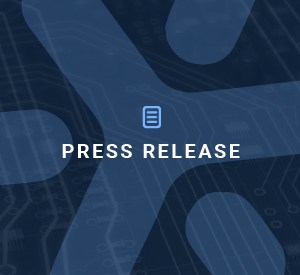uiux
Regular
I wanted to collate a few of the NASA/military/government related projects together to try get a better idea of the subterranean reach of BrainChip's Akida. If I have missed any - let me know.
Here is a summary list of organisations directly involved with BrainChip Akida:
SiFive:
 venturebeat.com
venturebeat.com
SIFive is also a member of the DARPA toolbox initiative
Vorago:
Deep Neural Net and Neuromorphic Processors for In-Space Autonomy and Cognition
Vorago is radiation hardening the Akida IP.
Vorago is also radiation hardening the RISC-V IP.
Quantum Ventura:
Realtime Neuromorphic Cyber-Agents (Cyber-NeuroRT)
Intellisense Systems:
Deep Neural Net and Neuromorphic Processors for In-Space Autonomy and Cognition
Intellisense Systems, Inc. (Torrance, Calif.) for Radiofrequency One-Shot Learning for Emission Recognition

 www.army.mil
www.army.mil
Adaptive Deep Onboard Reinforcement Bidirectional Learning System
Tensor Innovation Partners:
Scalable Neural Net and Neuromorphic Module for In-Space Autonomous Orientation and Maneuvering

 techport.nasa.gov
techport.nasa.gov
Riverside Research:
Securing Compartmented Information with Smart Radio Systems (SCISRS)
BHTech:
Implementing Neural Network Algorithms on Neuromorphic Processors

 xcelaero.com
xcelaero.com
Information Systems Laboratories:
Deep Learning Sensor Technology for Safe Flying Car Operations

 brainchipinc.com
brainchipinc.com
NUMEM:
Neuromorphic Processor with radiation tolerant MRAM
Here is a summary list of organisations directly involved with BrainChip Akida:
- NASA
- SiFive
- Vorago
- Quantum Ventura
- Intellisense Systems
- Riverside Research
- Tensor Innovation Partners
- BHTech
- Information Systems Laboritories
- NUMEM
SiFive:
BrainChip, SiFive partner to bring AI and ML to edge computing
The integration of BrainChip's Akida technology and SiFive's multi-core capable RISC-V processors is expected to provide an efficient solution for integrated edge AI computing.
SIFive is also a member of the DARPA toolbox initiative
Vorago:
Deep Neural Net and Neuromorphic Processors for In-Space Autonomy and Cognition
Vorago is radiation hardening the Akida IP.
Vorago is also radiation hardening the RISC-V IP.
Quantum Ventura:
Realtime Neuromorphic Cyber-Agents (Cyber-NeuroRT)
Intellisense Systems:
Deep Neural Net and Neuromorphic Processors for In-Space Autonomy and Cognition
Intellisense Systems, Inc. (Torrance, Calif.) for Radiofrequency One-Shot Learning for Emission Recognition

Army awards $19M to small businesses to develop AI/ML technologies
WASHINGTON – The U.S. Army has awarded nearly $19 million to 23 small businesses to develop their artificial intelligence and machine learning solutions...
Adaptive Deep Onboard Reinforcement Bidirectional Learning System
Tensor Innovation Partners:
Scalable Neural Net and Neuromorphic Module for In-Space Autonomous Orientation and Maneuvering

NASA TechPort
NASA's Technology Portfolio Management System (TechPort) is a single, comprehensive resource for locating detailed information about NASA-funded technologies. Those technologies cover a broad range of areas, such as propulsion, nanotechnology, robotics, and human health. You can find useful...
Riverside Research:
Securing Compartmented Information with Smart Radio Systems (SCISRS)
BHTech:
Implementing Neural Network Algorithms on Neuromorphic Processors

3/17/2022 Press Release - BHTech wins Phase II SBIR Award for Implementing Neural Network Algorithms on Neuromorphic Processors
The generation of real-time insights for the warfighter is an increasingly important area of interest, especially due to the growth of Electronic Warfare challenges. These insights require faster processors and smarter models that can be deployed at the edge in low Size, Weight and Power (SWaP)...
Information Systems Laboratories:
Deep Learning Sensor Technology for Safe Flying Car Operations

Information Systems Labs Joins BrainChip Early Access Program
BrainChip announced that Information Systems Labs is developing an AI-based radar research solution for the AFRL based on Akida™
NUMEM:
Neuromorphic Processor with radiation tolerant MRAM

